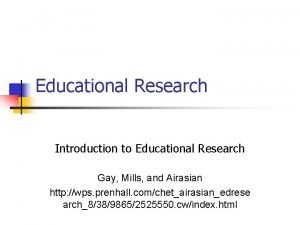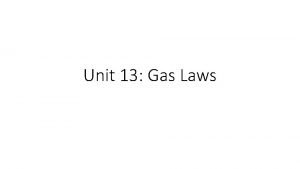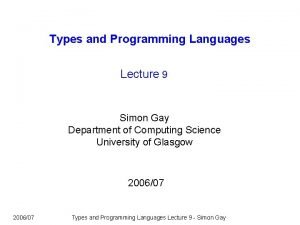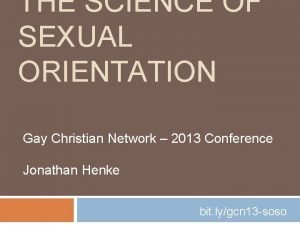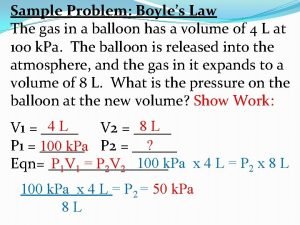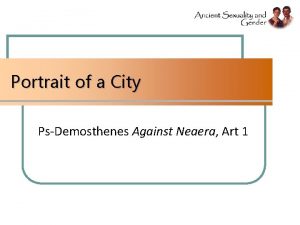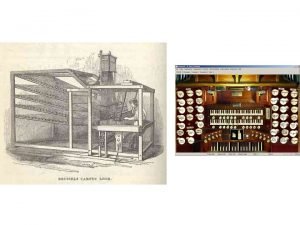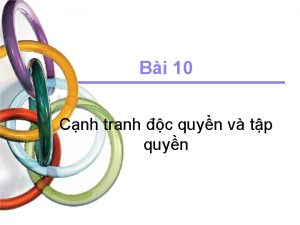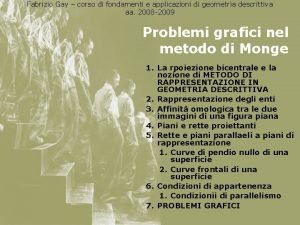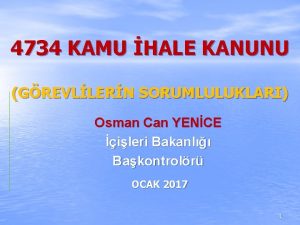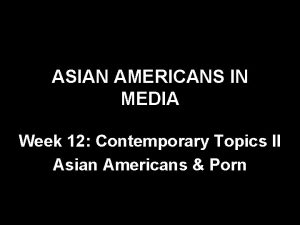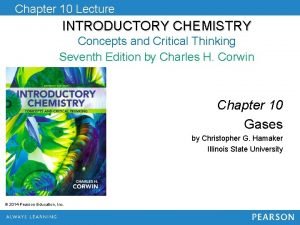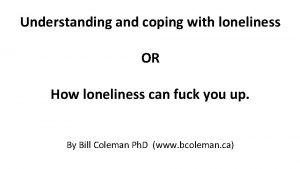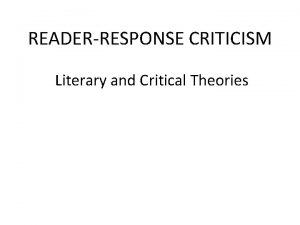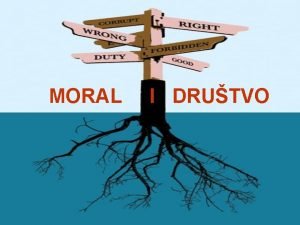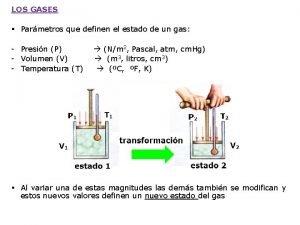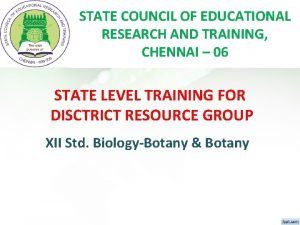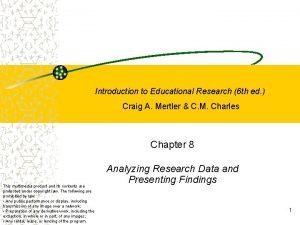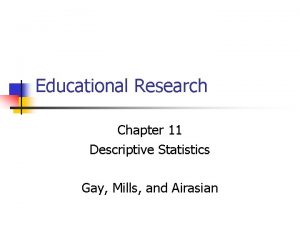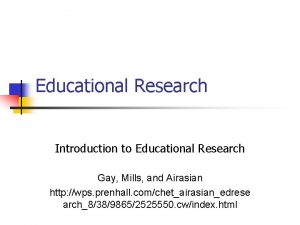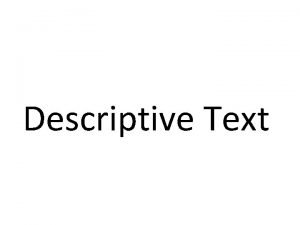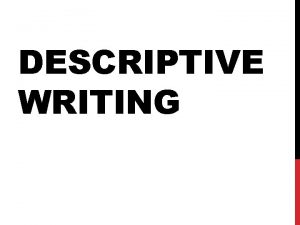Educational Research Descriptive Research Shannelle Gay P Paracha













































































- Slides: 77

Educational Research: Descriptive Research Shannelle Gay P. Paracha Master of English in Applied Linguistics

Research. . . l The systematic application of a family of methods employed to provide trustworthy information about problems. l "recherche"

DESCRIPTIVE RESEARCH (“SURVEY RESEARCH”) …collects data in order to answer questions about the current status of the subject or topic of study …uses formal instruments to study preferences, attitudes, practices, concerns, or interests of a sample

Descriptive-Qualitative (Ethnography/ Case Study) Detailed descriptions of specific situation(s) using interviews, observations, document review You describe things as they are. • How do people implement this program? • What challenges do people face? • What are people’s perceptions? Did the program cause any changes in participants’ outcomes?

Descriptive-Quantitative Numerical descriptions (frequency, average) You measure things as they are. • How many people are participating in this program? • What are the characteristics of people in this program? • How well did participants in this program do? Did the program cause any changes in participants’ outcomes? Why did the program work this way?

The basic steps of conducting a descriptive research. . . recognizing and identifying a topic to be studied selecting an appropriate sample of participants collecting valid and reliable data reporting conclusions

Descriptive Research Step 1: Statement of the problem 1. Do teachers hold favorable attitudes toward using computers in schools? 2. What is the best way to provide access to computer equipment in schools? 3. What is generally the word-formation process utilized in the formation of text

Step 2: Identification of information needed to solve the problem

Step 3: Selection or development of instruments for gathering the information 1. 2. 3. 4. surveys, interviews, observations, and portfolios

Kinds of Survey CROSS-SECTIONAL SURVEY… SURVEY …involves collecting data from selected individuals in a single time period however long it takes to collect data from participants

LONGITUDINAL SURVEY… SURVEY …involves collecting data at two or more instances in order to measure changes over time

SELF-REPORT SURVEY… SURVEY …requires individuals to respond to a series of statements or questions about themselves

OBSERVATION STUDY… STUDY …the researcher obtains data by watching participants in a situation

TYPES OF SELF-REPORT ITEMS …scaled …ranked …checklist …free response

Step 4: Identification of target population and determination of sampling procedure …use an appropriate sampling technique …participants must be able to provide the desired information sought and willing to provide it to the researcher

Step 5: Design of procedure for information collection Step 6: Collection of information Step 7: Analysis of information Step 8: Generalizations and/or predictions

Conducting a questionnaire study… 1. state the problem 2. select participants 3. construct the questionnaire 4. prepare cover letter 5. pretest questionnaire 6. follow up activities 7. analyze/report results

Designing an instrument… …include a brief statement describing the study and its purpose at the top of the instrument …provide standardized directions …organize items leaving sufficient white space on instrument

…place similar items together …ask general, non-threatening items first, moving into more specific, self -revealing items

SOME DO’S AND DON’T’S… …construct items according to a set of predetermined guidelines …include only items relating directly to the purpose of the study …avoid jargon or any term or concept that might mean different things to different people

…each item should deal with a single concept and be worded as clearly as possible …items should indicate a point of reference beyond the self in order to judge the self …avoid ambiguous terms like several or usually

…avoid touchy matters in items which respondents might not respond to honestly or at all …avoid leading questions which suggest that one response may be more appropriate than another …each item must be able to stand on its own

…don’t jam items together …don’t put the most important questions at the end of the instrument

prepare the cover letter… …a brief, neat, explanation of the significance of the study and what is being asked of the respondent and why …addressed to the specific, potential respondent

…an endorsement adds credibility …guarantee anonymity or confidentiality …include a specific deadline date by which the completed instrument (“questionnaire”) is to be returned

…individually sign each letter …include a self-addressed, stamped, return envelope

pretest the instrument… …conduct a pilot study to gather information about deficiencies and suggestions for improving the instrument …provides greater content validity

follow-up activities… …because first mailing results tend to be low (30% - 50% response rate), researchers need strategies to increase the response rate

l initial follow-up strategies to increase response rate up to 20%… …send out reminder postcard …mail a second packet with a new, positively worded cover letter and another self-addressed, stamped, return envelope

l secondary follow-up strategies to increase response rate up to 10%… …telephone nonrespondents to encourage them to respond

l dealing with nonrespondents …study whether nonrespondents differ from respondents in some systematic way by selecting a sample from the nonrespondents …telephone sample, aggregate data, include in report

l dealing with nonresponses …study the items to determine the problem with the item …include description of the nonresponses and the determination of the reason in the report

analyze/report results… …discriminant item analysis includes giving the response rate for each item as well as the total sample size and the overall percentage of returns, since not all respondents will answer questions

…group items into clusters that address the same issue and develop total scores across an item cluster in order to avoid “information overload”

Conducting an interview study… 1. state the problem 2. select participants 3. construct the interview guide 4. communicate professionally and record responses accurately 5. pretest interview procedure 6. analyze/report results

1. STATE THE PROBLEM… …topic must be of sufficient significance to motivate individuals to participate and justify the research effort in the first place …define topic in terms of specific objectives indicating the kind of information needed

2. SELECT PARTICIPANTS… …use an appropriate sampling technique …participants must be able to provide the desired information sought and willing to provide it to the researcher

3. CONSTRUCT THE INTERVIEW INSTRUMENT (“INSTRUMENT GUIDE”)… GUIDE …indicates the question to be asked, the order, and how much additional prompting or probing is permitted …the goal is to obtain standardized, comparable data from each interviewee

4. COMMUNICATE PROFESSIONALLY AND RECORD RESPONSES ACCURATELY… …effective interviewing requires training and experience to avoid interviewer bias and interviewer error

…record responses manually on the interview guide …(requires interviewee permission) use a tape recorder or VCR to verify accuracy of responses

5. PRETEST INTERVIEW PROCEDURE… …use a small group from the same population or a similar population to the one being studied to validate the interview instrument and the interviewer’s communication and recording skills

6. ANALYZE/REPORT RESULTS… …item analysis includes giving the response rate for each item, as well as the total sample size and the overall percentage of returns, since not every respondent will answer all questions

…also include in-depth data to openended interview items to portray responses in more accurate and honest terms

Conducting an observational study… 1. state the problem 2. select participants 3. define the observational variables 4. record observations 5. assess observer reliability 6. reduce observer bias 7. analyze/report results

1. STATE THE PROBLEM… …topic must be of sufficient significance to motivate potential respondents and justify the research effort in the first place …define topic in terms of specific objectives indicating the kind of information needed

2. SELECT PARTICIPANTS… …use an appropriate sampling technique …participants must be able to provide the desired information sought and willing to provide it to the researcher

3. DEFINE THE OBSERVATIONAL VARIABLES… …operationalize the variables to be observed in terms of specific behaviors that can be quantified …ensure that the observations can be quantified in a way so that all observers will count the behavioral activities in exactly the same way

…simplify procedure for recording observations by developing a coding procedure

4. RECORD OBSERVATIONS… …record behavior at the time it occurs …alternate observation periods and recording periods

5. ASSESS OBSERVER RELIABILITY… …use at least two observers who make independent observations …compute interobserver reliability

6. REDUCE OBSERVER BIAS… …train observers until a satisfactory level of agreement is achieved (at least 80%) …monitor observers

l TYPES OF OBSERVER BIAS …response set …halo effect …knowledge of participants

l response set …the tendency of an observer to rate the majority of observees as above average, or below average regardless of the observees’ actual behavior

l halo effect …the tendency of an observer’s initial positive or negative impressions of the observee to affect subsequent observations

l self-fulfilling prophecy …the tendency of an observer’s knowledge of the observees or the purposes of the study to affect the observation(s)

Mini-Quiz… l True or false… …in a descriptive research study, the researcher predetermines what variables will be surveyed before selecting or observing the research participants True

…one of the most difficult activities on the part of questionnaire researchers is to write or select questions that are clear and unambiguous True

…longitudinal surveys are useful for studying the dynamics of a topic or issue over time True

…one of the problems with longitudinal studies is that the samples tend to shrink as time goes by True

…one of the problems with crosssectional studies is selecting samples that truly represent the population at a particular level or ability True

…an external review of an instrument provides the researcher greater assurance of it its content validity True

…if the responses from respondents and nonrespondents are essentially the same, the researcher may assume that the response group is representative of the whole sample and that the survey results are generalizable True

…if the responses from respondents and nonrespondents are different, the generalizability across both the respondent and nonrespondent groups is not present and must be discussed in the report True

…bias can affect the validity of the interpretations in observational studies True

l Fill in the blank… …a study requiring individuals to respond to a series of statements or questions about themselves self-report study

l Fill in the blank… …a study in which individuals are not directly asked for information but data is obtained as the researcher watches participants engage in a situation observation study

l Fill in the blank… …items on a survey that are answered by circling a letter, checking a list, or numbering preferences close-ended items

l Fill in the blank… …the researcher guarantees that no one, including the researcher, knows who completed each questionnaire anonymity

l Fill in the blank… …the researcher guarantees that no one, except the researcher, knows who completed each questionnaire and promises not to divulge that information confidentiality

l Fill in the blank… …the oral, in person administration of an instrument to each member of a sample interview

l Fill in the blank… …determining the current status of a phenomenon not through an instrument but as the researcher watches the participants engage in the activity being studied observational study

l Fill in the blank… …an observation in which the researcher watches behavior as it normally unfolds naturalistic observation

l Fill in the blank… …an observation in which the researcher creates a situation to be observed and tells participants what activities to engage in simulation observation

l Fill in the blank… …a coefficient found by dividing the total number of agreed observations by the total number of agreed and disagreed observations inter-observer reliability

l Fill in the blank… …a means by which observers record observations at the time it occurs by simplifying the recording process coding

l Fill in the blank… …a statistical approach that summarizes the results of many studies having investigate the same problem meta-analysis

This module has focused on. . . descriptive research …which involves collecting data in order to test hypotheses or to answer questions about the opinions of people about some topic or issue
 Educational research gay
Educational research gay Characteristics of ethnographic research
Characteristics of ethnographic research Gay 2012 descriptive research
Gay 2012 descriptive research How to calculate boyle's law
How to calculate boyle's law Gay typings
Gay typings Visio gay
Visio gay Mathematical equation of gay lussac's law
Mathematical equation of gay lussac's law Scientific names for sharks
Scientific names for sharks Sample problem in boyle's law
Sample problem in boyle's law Queen band gay
Queen band gay Demosthenes against neaera
Demosthenes against neaera Emmanuelle gay
Emmanuelle gay Gay kviz
Gay kviz Jess fishlock relationship status
Jess fishlock relationship status Ideal gaz nedir
Ideal gaz nedir Gaylussacs law
Gaylussacs law Gay lussac's law
Gay lussac's law Dotados gey
Dotados gey First computer invented
First computer invented để nguyên nước chấm cổ truyền
để nguyên nước chấm cổ truyền Bài tập mô hình cournot
Bài tập mô hình cournot Gãy lmc
Gãy lmc Porno gay
Porno gay Oliver twist plot
Oliver twist plot Histoire de gays
Histoire de gays Genogram multiple marriages
Genogram multiple marriages Fabrizio gay
Fabrizio gay Leggi dei gas zanichelli
Leggi dei gas zanichelli Teori kinetik gas
Teori kinetik gas Gay osman ifşa
Gay osman ifşa Gay china massage
Gay china massage Gay adverb
Gay adverb Paul stanton beliefs
Paul stanton beliefs Fotos de chile leccion 9
Fotos de chile leccion 9 Law of combining volumes
Law of combining volumes Claudio gay
Claudio gay Gãy giọt lệ
Gãy giọt lệ Annabel ghong
Annabel ghong Vocabulario gay
Vocabulario gay Izobara izocora izoterma
Izobara izocora izoterma Cambios de estado grafica
Cambios de estado grafica Pride month is over stop being gay
Pride month is over stop being gay Satisfaction
Satisfaction Ley de gas ideal
Ley de gas ideal What gas law was discovered by joseph louis gay-lussac?
What gas law was discovered by joseph louis gay-lussac? Gay lissacs law
Gay lissacs law Are you gay quiz
Are you gay quiz Eoin fahy
Eoin fahy Accept your loneliness you are your only friend
Accept your loneliness you are your only friend Standard temperature and pressure
Standard temperature and pressure Gay lussac's law
Gay lussac's law Lou myers gay
Lou myers gay Yossef av-gay
Yossef av-gay Gay test
Gay test David osumi-sutherland
David osumi-sutherland Brad pitt and adam sandler
Brad pitt and adam sandler Gay prostitucija
Gay prostitucija Variables que afectan el comportamiento de los gases
Variables que afectan el comportamiento de los gases Ley de gay lussac
Ley de gay lussac La loi de gay lussac
La loi de gay lussac Charles' law worksheet with answers
Charles' law worksheet with answers Gây tê cơ vuông thắt lưng
Gây tê cơ vuông thắt lưng Gay lussacův zákon
Gay lussacův zákon Nixon carter gay
Nixon carter gay Treinamento gay dominante
Treinamento gay dominante Bašćanska ploča kviz
Bašćanska ploča kviz Tony mills gay
Tony mills gay Law of combining volumes
Law of combining volumes Gay pof
Gay pof Gay tribes defined clean cut
Gay tribes defined clean cut Gay adi
Gay adi Beowulf gay
Beowulf gay Importance of qualitative research
Importance of qualitative research Correlational research advantages and disadvantages
Correlational research advantages and disadvantages Tnscert
Tnscert Educational research and development
Educational research and development Introduction to educational research mertler
Introduction to educational research mertler Types of educational research
Types of educational research
